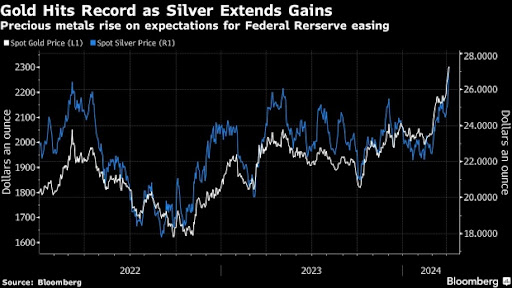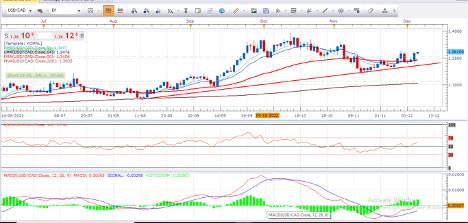[ad_1]
In summary, the latest ADP payroll numbers paint a promising picture of economic recovery, with indications of sustained job growth across various sectors. These positive trends bode well for the growth signals seen of the US economy. However, these along with the lack of anything hawkish from Powell, added to worries the FOMC will not be cutting as many times as anticipated this year. The Fed funds futures, implied rates are now about 50-50 for a June cut, with July showing about a 95% probability for the first cut.
An interesting study from IMF Working Paper on Gold’s reaction for the past 35 NFP releases showed that the historical impact of the US jobs report on Gold’s value is greater if the NFP disappoints.
In the long term, there isn’t a definitive correlation between Gold prices and the jobs report, as indicated by the IMF Working Paper. However, short-term movements in gold prices tend to demonstrate a more pronounced response to a disappointing jobs report compared to a positive one. Meanwhile due to the negative correlation between the price of Gold and NFP surprises, the Gold often shows a slight decrease 4 hours after the data release.
However, investor reactions to these surprises depend on their implications for the Fed’s monetary policy and short-term interest rates. While job reports were once considered pivotal for Fed decisions, their significance for the Gold market has waned over time.
- Strong job reports typically signal a healthy economy, exerting downward pressure on gold prices.
- Weak job reports typically signal a poor economy, exerting upward pressure on gold prices.
Key is also the fact that throughout history, gold has been viewed as a dependable hedge during periods of economic and political uncertainty, which explains why an unprecedented number of investors turned to gold in 2023 and so far this year, despite the signals for growth in the US economy even as inflation remained stubbornly above the central bank’s target! On top of that, this week data compiled by the World Gold Council showed that central banks continued adding to their gold holdings last month. This was the 9th straight month of net buying, with China still dominating purchases. Haven demand is also boosting Gold prices higher.
Click here to access our Economic Calendar
Andria Pichidi
Market Analyst
Disclaimer: This material is provided as a general marketing communication for information purposes only and does not constitute an independent investment research. Nothing in this communication contains, or should be considered as containing, an investment advice or an investment recommendation or a solicitation for the purpose of buying or selling of any financial instrument. All information provided is gathered from reputable sources and any information containing an indication of past performance is not a guarantee or reliable indicator of future performance. Users acknowledge that any investment in Leveraged Products is characterized by a certain degree of uncertainty and that any investment of this nature involves a high level of risk for which the users are solely responsible and liable. We assume no liability for any loss arising from any investment made based on the information provided in this communication. This communication must not be reproduced or further distributed without our prior written permission.
[ad_2]
Source link



